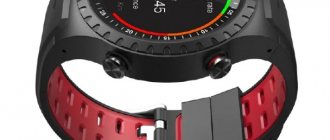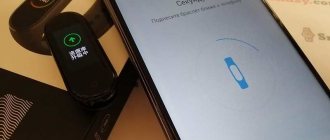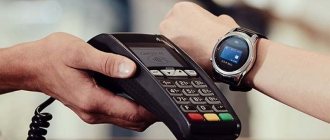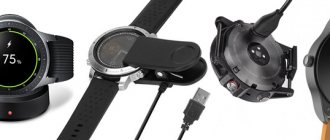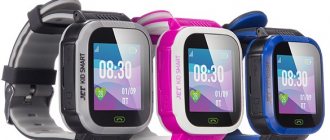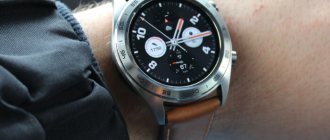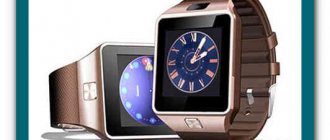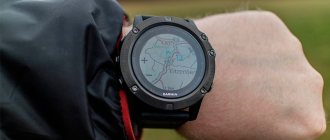HomeReviews
Natalie Vesna 10/28/2020
Average rating+1
Save to bookmarksSavedDeleted 1
Average rating+1
2794
- 0
- 0
- 0
- 0
- 1
- 1share
We bring you a detailed review of the Asus VivoWatch BP to tell you about the appearance, features and specifications of this device.
Asus is far from a leader in the smartwatch market, but it has its loyal followers thanks to the additional functionality in its devices. This primarily concerns medical functions. Thus, the Asus VivoWatch BP HC-A04 smart watch is capable of not only counting steps and tracking pulse, but also measuring blood pressure.
This is not the only advantage of the new Asus watches. They also have excellent autonomy: you need to charge the watch once a month or even less often. The transflective screen can work continuously, and due to the reflective layer in the sun, its brightness increases. Finally, athletes will appreciate the built-in GPS, which allows the watch to record tracks and determine coordinates without a smartphone.
Functions
VivoWatch BP is not only a device for monitoring health, but also a fitness tracker, with the help of which the user is given a number of useful functions during activity. Let's list all the features provided by the watch:
- Time and date display
- Pulse and pressure measurement
- GPS tracking
- Sleep monitoring
- Aerobic heart rate monitor with high or low heart rate alerts
- Pedometer
- Calorie counter
- Activity data with important metrics
- Relaxation level
- Notifications for incoming calls and messages
- Email Alerts
Characteristics
Formally, the characteristics look like this:
| Dimensions | 48x48x12 mm |
| Weight | 45 g (with fixed strap) |
| Display | diagonal – 1.26 inches. Matrix type and resolution not specified |
| Protection | IP67 (allows short-term immersion in water) |
| Compatibility | Android 4.4+/iOS 11.0+ |
| Wireless connection | Bluetooth 4.2 |
| Sensors | accelerometer, PPG, ECG |
| Navigation | GPS |
| Indication | backlight, vibration |
There is no camera, microphone or speaker in the watch, as well as the ability to work with the Internet (although you can update the firmware through an application on your smartphone). The manufacturer is well aware that potential watch buyers are unlikely to care about the name of the processor, the amount of RAM and built-in memory: by the way, there is no built-in user memory in the watch at all. The battery capacity is also not reported: the main thing is how many days the watch works on one charge (up to 28 days). And this is a completely reasonable approach: a geek won’t be impressed by such characteristics, but something completely different is important to the average user.
Equipment
Asus cannot be accused of excessively throwing dust in the eyes: unlike other manufacturers whose packaging looks more expensive than the gadget itself, the company prefers reliability and information content. The box is made of simple cardboard, and you can read key information about the watch on it.
The scope of delivery includes:
- Smart watch Asus VivoWatch BP
- Charging station (looks reliable and impressive)
- Micro USB cable
- An 84-page user manual is in English only, as well as a warranty card.
In general, everything is standard. There is, of course, no power adapter - naturally, since it is assumed that the user has a smartphone.
Functional
The first Asus VivoWatch entered the market back in 2015, but were, in general, ordinary smartwatches without any special differences from competitors. But the model with the BP index has actually turned into a medical device.
“To determine the pressure, you need to put your finger on the electrode on the front panel for 20 seconds. The results are much more accurate than those of competitors. True, it was not always possible to find the correct position of the finger on the contact pad the first time, but this is a matter of practice.”
In addition to measuring blood pressure, VivoWatch BP fully monitors the owner’s lifestyle: they count pulse, steps and calories burned, determine the quality of sleep, the level of stress and physical activity. For this purpose, the device has a built-in GPS sensor, an aerobic heart rate indicator, a counter of steps and calories burned. All this works, forgive the pun, like a clock: the device measures everything accurately and, for example, does not confuse a car ride with a jog .
At the same time, VivoWatch receives notifications about new messages and calls from the phone (I, however, almost immediately disabled this function).
Managing all this wealth is simple: using the multifunction button on the end and the touch display, even a pensioner can learn to measure blood pressure. A proprietary application for smartphones is necessary not so much for the normal functioning of the watch - they also cope well in offline mode - but rather for statistics. The device communicates with the phone via Bluetooth version 4.2.
“What I liked most is that one battery charge lasts for an honest month of continuous use. A real record among all classmates, who last for a maximum of a few days. You don’t have to carry a watch charger with you either on vacation or on a business trip - it’s very convenient.”
Design
Let's face it, the watch is far from the standard appearance of both classic watches and standard smart watches. It doesn’t matter which smart watch we consider the reference – Apple Watch or Galaxy Watch: Asus VivoWatch BP is still different from them. First of all, it has a large body that resembles a rectangle with rounded corners. Looks like a small phone, yes.
The body color is noble black, and this does not immediately make it clear that the screen is much smaller than it seems. In the end, however, this cannot be hidden. And no need: Asus is not eager to make this particular model an example of frameless design. After all, one way or another, on the surface it is necessary to place an electrode for taking an ECG - a metal protrusion - and photoplethysmographic sensors - four points below it. They cannot be hidden, since they work in tandem with similar elements adjacent to the wrist on the back side.
The use case itself doesn't leave much choice. To take an ECG, the user must put the watch on one hand and firmly press the sensors on the surface with the index finger of the other. Working in pairs, the rear and front sensors will ensure the transmission of impulses through the entire body.
It is logical that the watch is made of plastic: given its size, this is the only way to make it light and eliminate unnecessary contact with electrically conductive skin. The screen, however, is protected by glass, from which only the aforementioned sensors protrude. There is only one button on the case, on the right side - for unlocking: the main control element is the touch screen. On the left side there are contacts for charging the watch.
Unfortunately, the watch strap is not removable - a design feature. However, there are enough holes on it for both a child’s hand and a hero’s paw. What’s even more offensive is that the watch does not have full protection against water. Formally, the IP67 standard allows for short-term immersion in water, but here the manufacturer directly warns to avoid swimming and other situations where the watch can get wet. It is better to take them off even before going to the shower. Most likely the cause was the sensors.
The overall impression of the device is functionality above all else. However, this is typical for medical technology in general. And Asus is clearly positioning this model as a medical device, and not, say, an image or geek device. From this point of view, everything is practical and successful.
Appearance and design
“VivoWatch looks unusual and even strange. This is still not a fashionable toy, but almost a medical device, which its appearance really screams about. The small LCD display takes up barely half the area of the watch, and it is also shifted to the right - the left side is occupied by sensors. Well, at least the screen is color. It is made using trans-reflective technology and is protected by tempered glass: everything is visible in the sun, and even a careless owner like me does not leave any scratches.”
The delivery set is very modest: in addition to the watch itself, the box contains only a charging station, a USB cable and instructions. Just like Sparta. Although it’s hard to think of anything else that could be added here, so let’s not consider this a drawback.
“The strap is made of medical silicone. Not God knows what luxury, but it doesn’t irritate the skin, and that’s okay. I wear the watch without taking it off: for several months there have been no allergies or other problems. VivoWatch is comfortable to wear all the time - it weighs only 45 grams, the soft strap does not rub your wrist, so you soon stop noticing the watch. This is also good because the bracelet is not removable - you will have to get used to it in any case,” says our doctor.
The case is protected from dust and water splashes according to the IP67 standard. I didn’t risk diving with them, but I washed my hands calmly and didn’t take them off in the rain - the VivoWatch survived all the abuse with honor.
In general, the watch is assembled conscientiously and leaves the impression of a solid device. Although, of course, the strange appearance and rather large size with a small screen immediately make it clear that the design here has been sacrificed for practicality and functionality.
Application
Like all similar devices, the watch needs a special application to communicate with a smartphone - in this case it is called Asus HealthConnect. This is a special application for VivoWatch BP, it is not compatible with other Asus watches or trackers.
The application is available for iOS and Android. Through the application, data from the watch goes to the smartphone and, accordingly, to the proprietary cloud.
The home screen offers a number of pre-installed widgets to navigate to different modes. You can look at them:
- number of steps taken per day (including in comparison with the norm)
- sleep status report
- current heart rate (and measure it if desired)
The developers do not explain some things - for example, the “Stress Relief Level” (perhaps a lack of localization, or a derivative of the change in heart rate recently).
The watch (and the app) doesn't measure everything it can. The user obviously must enter some data himself - for example, calories consumed, blood sugar level, current weight, medications taken. Essentially, it's not just a companion for your watch, but also a hub for collecting health data, similar to Google Fit or Apple Health.
The disadvantage of the watch is the lack of a smart alarm clock that determines the ideal time to wake up based on your sleep phase. There is a regular alarm clock, and it supports vibration on the watch, but we are already spoiled by smart analogues. So that's a minus.
How to connect a smart watch to a smartphone
- Android Wear software is downloaded to the smartphone from the Play Store.
- At the same time, the program is launched on the smartphone and the clock is turned on.
- In the settings, click “Configure” so that the smartphone automatically displays the brand and model of the watch. Then click on the desired name.
- Codes will appear on the displays of your smartphone and watch. If they match, you need to click “Connect”, then wait for the process to complete.
- If the codes do not match, you should try to repeat the procedure again.
Clock interface
Everything here is simple and modest. The developer provides the original five dials, which cannot be replaced - unless new ones appear in the updated firmware. However, you can’t really use your imagination with such a screen. All dials are static, all have a dark background. They differ in details: one shows the current activity, the other shows the battery charge, and so on. It’s awkward to compare them not only with Wear OS or Apple Watch, but even with Amazfit. Of course, Asus watches are not about design, and we understand that – but still.
The watch has four built-in programs in total. With the “Steps”, “Sleep” and “Pulse” modes, everything is clear: they show statistics based on data from sensors, and the pulse can be measured on the spot.
The Messages mode is made a little ridiculously: it shows the text of an incoming message, but does not show which application it came through. This approach would make sense if it were possible to answer it directly from the watch. But, alas, not in this life.
Since this is an Asus VivoWatch BP with a blood pressure monitor function, it needs to be calibrated first. To do this, you will need a regular tonometer, with which you will measure your blood pressure several times in normal conditions. Then enter this data into the application as basic data. Without this, you won't be able to use the watch to measure blood pressure.
This may seem counterintuitive: why use a watch to measure blood pressure if you already have a full-fledged blood pressure monitor? On the other hand, why do you need a watch to read messages if you already have a full-fledged smartphone? A watch should not be perceived as a replacement for a device, but as a companion device, a display that is always on your wrist.
It should be noted that the calibrated watch shows fairly accurate pressure measurement results. An error of about 5% is quite acceptable, given that they are needed primarily to track either sharp pressure surges or long-term trends. A portable device makes sense for exactly this. The picture is similar with heart rate measurement: with their help you can track a sharp jump or drop, in which an error of 3-5% does not matter much. For training, for example, you can set the boundaries of the desired zone in which the heart rate should be kept.
The disadvantage of the model is synchronization failures. Perhaps a firmware update will solve this problem. Asus, admittedly, releases updates regularly, so anything can happen. Moreover, the only point of updating the firmware is to fix bugs and maybe add one or two watch faces (although the latter is unlikely).
Review of smart watches with a medical bias Asus VivoWatch BP
Asus has launched the VivoWatch BP smartwatch on the Russian market. The model, judging by its name, continues the line started in 2015 by the first VivoWatch, but it has little in common with its predecessor, as well as with smart watches from other manufacturers. In fact, Asus has entered the territory of medical gadgets by “teaching” its device to measure not only pulse, but also blood pressure. And this is the main innovation.
Other key features of the new product include a very long battery life (more than a month on a single battery charge), built-in GPS and a transreflective screen, that is, non-fading, economical and only becomes brighter in bright light.
Let's look at the detailed technical specifications of the device.
Specifications Asus VivoWatch BP (HC-A04)
- Screen: square, flat, transreflective, 1.26″ (resolution and matrix type are not reported)
- Splash protection: yes (IP67)
- Strap: non-removable, silicone
- Compatibility: Android 4.4 and later / iOS 11.0 and later
- Connectivity: Bluetooth 4.2
- Processor: not reported
- RAM: not reported
- Built-in memory: no user accessible memory
- Sensors: accelerometer, GPS, ECG and PPG sensors
- No camera
- Internet: no
- Microphone: no
- Speaker: no
- Indication: vibration signal, backlight
- Battery: capacity not reported
- Weight 45 g (with strap)
For clarity, let’s compare the characteristics of the new product with the Apple Watch Series 4, as the main autumn novelty on the smartwatch market, as well as with the Huawei Watch GT, in some ways even closer to the Asus VivoWatch BP than to regular smartwatches.
| Asus VivoWatch BP | Huawei Watch GT | Apple Watch Series 4 | |
| Screen | square, flat, transreflective, 1.26″ | round, flat, Super AMOLED, ∅1.39″, 454×454 | rectangular, flat, AMOLED, 1.57″, 324×394 (325 ppi) / 1.78″, 368×448 (326 ppi) |
| Protection | splash proof (IP67) | from water (5 atm) | from water (5 atm) |
| Strap | non-removable, silicone | removable, leather-silicone / silicone | removable, leather / silicone / metal / nylon |
| SoC (CPU) | N/A | 2 cores | Apple S4 (2 cores) + Apple W3 |
| Connection | Bluetooth 4.2, GPS | Bluetooth 4.2, GPS support in smartphone | LTE (not available in Russia), Wi-Fi, Bluetooth 5.0, GPS, Galileo, QZSS |
| Sensors | accelerometer, GPS, ECG and PPG sensors | barometer, accelerometer, gyroscope, magnetometer, heart rate sensor, ambient light sensor | barometric altimeter, accelerometer, gyroscope, electrical heart rate sensor, optical heart rate sensor, ambient light sensor |
| Built-in storage capacity | N/A | 128 MB | 16 GB |
| Compatibility | devices running Android 4.4 and later / iOS 11.0 and later | devices running Android 4.4 and later / iOS 9.0 and later | devices running iOS 8.3 and later |
| operating system | own | own | watchOS 5.0 |
| Dimensions (mm) | 48×42×12 | 47×47×11 | 40×34×11 / 44×38×11 |
| Weight (g) | 45 | 46 | 30 / 37 |
| average price | find out prices | find out prices | find out prices |
| Asus VivoWatch BP Retail Offers | find out the price | ||
At first glance, the device is inferior to its competitors in all respects. However, if we compare the set of sensors, we will see that the Asus VivoWatch BP is special and unique. In addition, the table does not include information about battery life. The fact is that this parameter is inaccurate, we have no information about the battery capacity, and in the case of smart watches it doesn’t say much, but in fact, the Asus VivoWatch BP is the most “long-lasting” device among those considered in comparison.
Equipment
The watch is delivered in a cardboard box that looks very standard, without pretensions to high style, but at the same time informative.
The equipment is modest: a Micro-USB cable, a very massive charging dock, a warranty card and an 84-page English booklet with a user manual.
The presence of a detailed user manual (instead of standard leaflets) cannot but be noted as a plus, and the strap here is still not detachable, so there is no point in additional or alternative straps. Well, as for the charger, the manufacturer rightly reasoned that since the user has a smartphone, that means there will be a charger.
Design
The appearance of the watch is one of the most controversial and unusual features of the product. The black body has an oblong shape, stretched along the arm, and strongly rounded corners (the result is something between a rectangle and an oval).
At the same time, the screen itself occupies a relatively small part of the front surface area - Asus here goes against the existing trend of reducing the frames around the screen. However, due to the fact that the screen has a dark background, this is not so noticeable. But still it is visible.
To the left of the display there is an ECG electrode (a round metal element protruding slightly above the surface) and photoplethysmogram sensors (four points below it). They work in conjunction with similar elements on the back surface.
In the photo above, metal parts provide ECG measurement, and sensors for photoplethysmogram are located in the center. Thus, to measure, it is necessary that the watch be put on the hand and the back surface is adjacent to the skin, and the front surface sensors must be covered with the index finger.
The main part of the body is made of black matte plastic, and the front surface (except for the electrode) is covered with glass. On the right side of the device there is a single button with which the watch is unlocked, and on the left there are contacts for connecting to the charger.
The strap is made of black silicone. Alas, it is not removable, and if any problems arise with it, you cannot do anything. However, as a plus, we note that the size of the strap is very universal and, thanks to the large number of holes, is suitable for both large and thin hands.
Unfortunately, you cannot swim in this watch, and you should shower with caution. Unlike most competitors, VivoWatch BP does not have full water resistance - only IP67, which protects against splashes. We assume that this is due to the characteristics of the sensors.
In general, the design evokes, of course, very mixed impressions. You can’t call it stylish, particularly comfortable, or having any other purely design advantages. But in this case, the manufacturer clearly set itself other goals - related, first of all, to medical functionality. And we will tell you further about how the watch copes with them.
Screen
The watch has a square, flat screen with a diagonal of 1.26″. The manufacturer does not indicate the resolution, and since it is impossible to take a screenshot from the device, there is simply no way to find out this parameter yourself. However, we can evaluate the remaining qualities of the display using our method. Detailed testing of the display was carried out by Alexey Kudryavtsev .
The front surface of the screen is made in the form of a glass plate with a mirror-smooth surface that is scratch-resistant. A color screen (most likely an e-paper type) is reflective. The microphotograph below shows stripes of a color filter and barely defined pixel boundaries, and this is all that could be discerned under the microscope (on the left is a small black area of the screen, on the right is white):
The backlight brightness is low, but it provides good reading of information in complete darkness. However, for example, when you quickly move your hand with a watch, you can see that the backlight flickers. As it turns out, pulse width modulation is used with a not very high frequency of 100 Hz. The graph below shows brightness (vertical axis) versus time (horizontal axis):
In the light, the information on the screen is clearly visible. In general, it can be argued that from the point of view of information legibility in any conditions, the quality of the screen is quite high.
Software and functionality
To use the watch, you need to install the Asus HealthConnect app, compatible with iOS and Android. It was released specifically for Asus VivoWatch BP and does not work with other products. What does it represent?
On the main screen there is a set of widgets. Each of them displays some parameter related to health or activity. By touching the widget we get more detailed information.
Among them are traditional things - heart rate, sleep, number of steps. There are also exotic ones: the mysterious “Stress Relief Level”, the algorithm of which is not explained anywhere. In addition, there are widgets that collect information entered by the user: weight. calories, medications, blood sugar. Thus, this application is not just a watch companion, but rather an electronic organizer for the user who cares about his physical condition.
Of course, there are settings here, but they do not relate to the location of widgets or their functionality, but to general things - synchronization parameters, data transfer to Apple HeathKit and other aspects that do not need to be adjusted very often.
The only thing worth highlighting is the presence of an alarm clock - not a “smart” one, alas, but a simple one, but independent of the smartphone. At the specified time, the watch will vibrate strongly, so even if you are sleeping fairly soundly, you will wake up.
The watch has five dials. All of them are static and made on a black background. The differences are in the type of display of information and its location in space.
So, one of the dials is good because it shows the battery charge as a percentage. The other displays the number of steps... But in general it cannot be said that they are very diverse.
There are also four “built-in” applications: Sleep, Steps, Heart Rate, Messages.
In Messages, the text is displayed correctly, but it is impossible to understand in which application the message came (Telegram, Facebook Messenger, or just SMS). Messages from all sources are grouped in a single list. And it is impossible to answer them.
However, the main thing, as already said, is not this, but the measurement of pressure. First, you need to carry out calibration, that is, measure the pressure on a regular tonometer (preferably several times), and then enter this data into the application - then VivoWatch BP will perceive them as the basic version. If this is not done, the measurement results on the watch will be far from the truth, and it will be impossible to rely on them. This, of course, is a minus: it turns out that you still need to have a regular blood pressure monitor, and the watch in this case is nothing more than a portable option. However, after calibration they give a very accurate and plausible result - the difference with a conventional tonometer is 5 percent, which is quite acceptable for such a device.
What's the point of such measurements? Perhaps this may be relevant for older people or those who have regular problems with blood pressure. Feeling unwell on the street? I sat down on a bench, measured my blood pressure, realized whether it was high or low, and made a decision: whether to call an ambulance (if the readings are too far from normal) or whether to take some medications.
Needless to say, carrying a full-fledged tonometer with you and measuring blood pressure in public places is not very convenient. VivoWatch BP just fills this niche, and in addition to blood pressure, it tracks heart rate (including during training - you can set the boundaries of zones so that when your heart rate is exceeded, the watch will signal), steps, sleep, and show notifications.
As a “fly in the ointment”, we note that the watch is not yet going smoothly with synchronization. Firstly, the process itself is very long. Secondly, during it mistakes happen. Perhaps this was a feature of a particular instance; it is also possible that if there are errors in the software, they will gradually be corrected with firmware updates. But it’s impossible not to mention this.
By the way, the manufacturer is really actively developing the product: new firmware and GPS data updates come regularly. Therefore, I would like to believe that the noted problems will soon be resolved. Alas, what the new firmware definitely won’t add is the ability to install some applications, extensions and watch faces. This is simply not provided here.
Autonomous operation
The watch lasts for about a month on a single charge. It is clear that this time varies depending on the mode of use, but even if you intensively use all the features - training modes, GPS, and notifications, you still will not be able to discharge the watch much faster (say, in two weeks). This is one of the main advantages of the model.
By the way, the watch also charges quite quickly. But considering how rarely you will have to do this, this parameter is not so important.
conclusions
The Asus VivoWatch BP is an interesting experiment in combining a standard smartwatch with a medical device. Here, as in the case of other products in the wearable electronics niche, it is important to clearly understand what and why you will wear this watch. In this case, we are not talking about a fashion accessory, an element of style - the appearance of the watch is very specific, and cannot be called universal. It is unlikely that the model should be perceived as an analogue of the Apple Watch / Samsung Galaxy Watch: there is no ability to install applications or change dials, working with notifications is not the most convenient (for example, you cannot respond to notifications).
Perhaps the main purpose of this watch is sports and medical. Is your blood pressure going up? Heart rhythm problems? Do you want to live a healthier lifestyle? Forgetting to take your medications? The Asus VivoWatch BP watch can become a convenient auxiliary tool. Yes, they will not replace a full-fledged tonometer and other medical instruments, but for a person who knows his problems and understands how to solve them, the gadget will be an effective component of this strategy.
This is probably an interesting option for older people. Measure your blood pressure while not at home, don’t miss a message from your children and grandchildren, don’t forget to take your medications, constantly monitor your pulse, help track your daily activity - to move no less than doctors advise, but not much more... Strictly speaking, this category of users I would hardly actively change straps and care about the appearance of the device; and the inability to install applications and watch faces will not bother her. But the above can be very useful.
Autonomy
This is why we need to abandon open OS and custom applications. The proprietary firmware can be optimized so well that the watch can run for a month on a single charge. Well, if you actively use notifications, exercise often and keep your GPS turned on all the time, then two to three weeks. Look from one side: Apple or Samsung watches need to be charged every day. Look at it on the other hand: early fitness trackers with similar autonomy had a more meager set of sensors, no GPS, and not even a display! So applause to the Asus engineers!
General impressions
Asus has released a very interesting watch with a clearly defined target audience. A watch with a blood pressure monitor Asus VivoWatch BP will be useful for people who monitor their health and are ready to neglect other functionality of smart watches. These are either elderly people, or patients who are aware of their problems with the cardiovascular system, or active athletes for whom listening to their body is vital.
In terms of style and smart functionality, the watch is inferior to almost all competitors. On the other hand, it is still impossible to fully use the ECG function on the Apple Watch, although it was announced for the previous generation. And Asus VivoWatch BP - please, even right now. For the target audience of the watch, however, this is not so critical. Athletes would choose a silicone strap anyway, and older people can afford to neglect style. Even if they prefer timeless leather or metal.
Thus, Asus has released an interesting device focused on health. The model has its own childhood problems - problems with synchronization or unsuccessful display of messages. But we believe this can be fixed with updates.
⇡#Conclusions
The ASUS VivoWatch BP model is suitable for both an active young person and an elderly user who wants to control their health. This watch can be purchased both as a regular sports watch and as a unique wearable device, among the main features of which it is necessary to note the original technology for measuring blood pressure. During the entire testing period, it was not possible to find any significant shortcomings in this watch - well, except that the lack of a Russian-language interface in the ASUS HealthAI application can be attributed to the shortcomings. But let's hope that the manufacturer will eliminate it in the near future. As for the advantages, here they are:
- original interesting design;
- comfortable wearing;
- LCD screen with memory;
- extremely simple and fast-to-use interface;
- presence of a GPS module;
- continuous heart rate measurement;
- original blood pressure measurement function without a cuff;
- functions for measuring sleep quality, stress and others;
- extensive capabilities of the ASUS HealthAI mobile application, not limited by the capabilities of the watch itself;
- record battery life.
As for the cost of the ASUS VivoWatch BP, it is much less than what they ask for for some other sports watches that do not have similar capabilities.


